
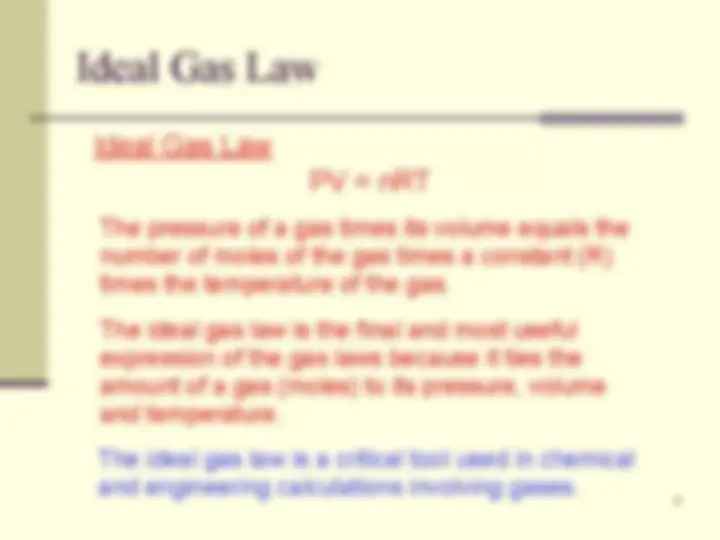
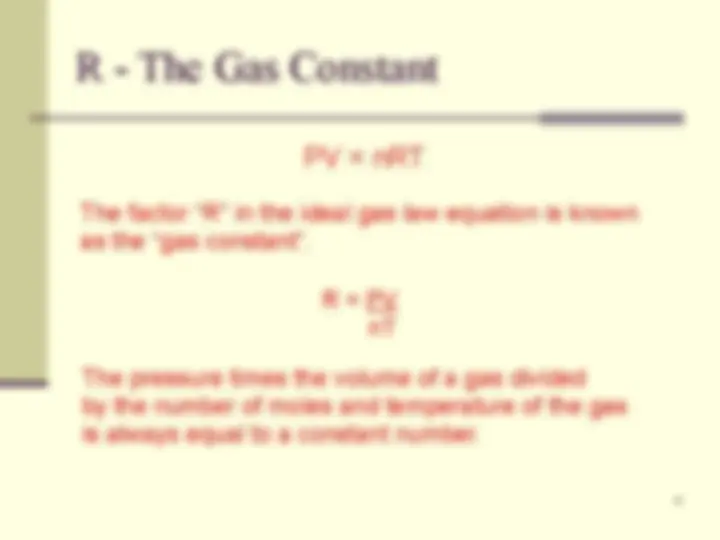
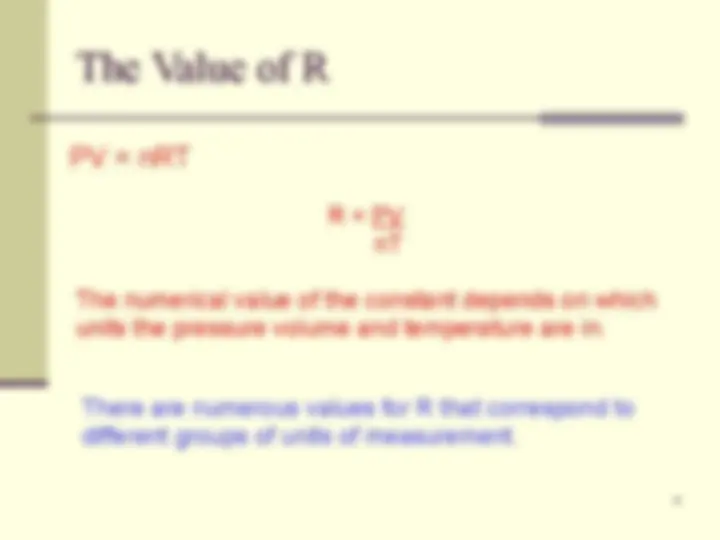
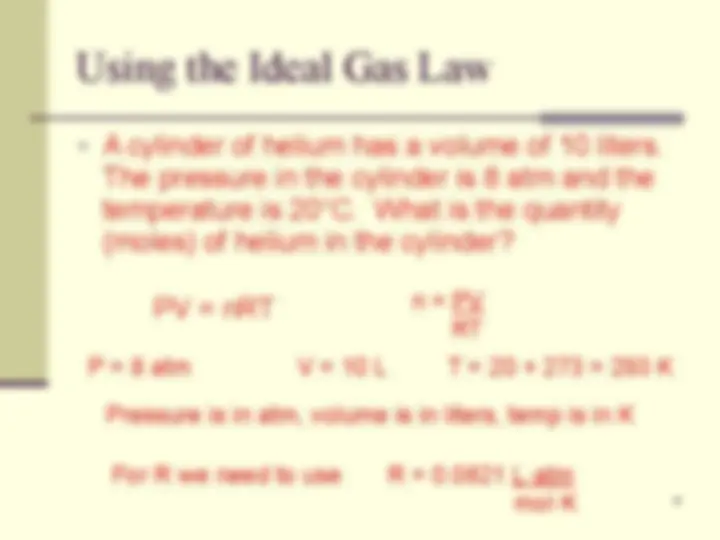
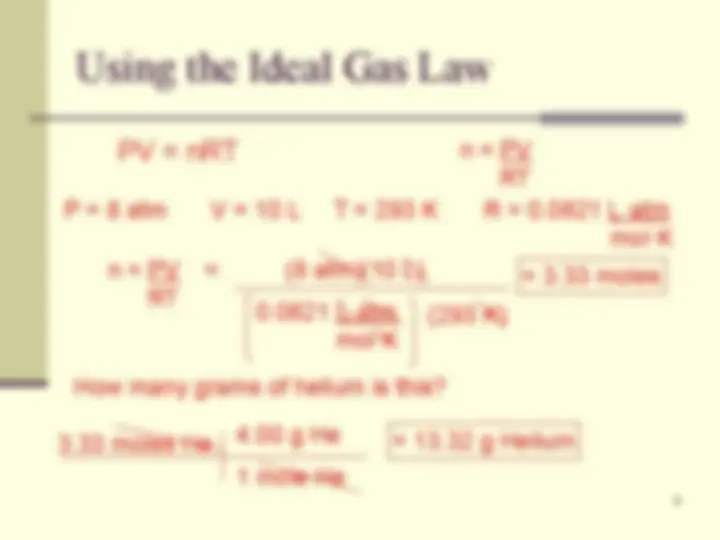
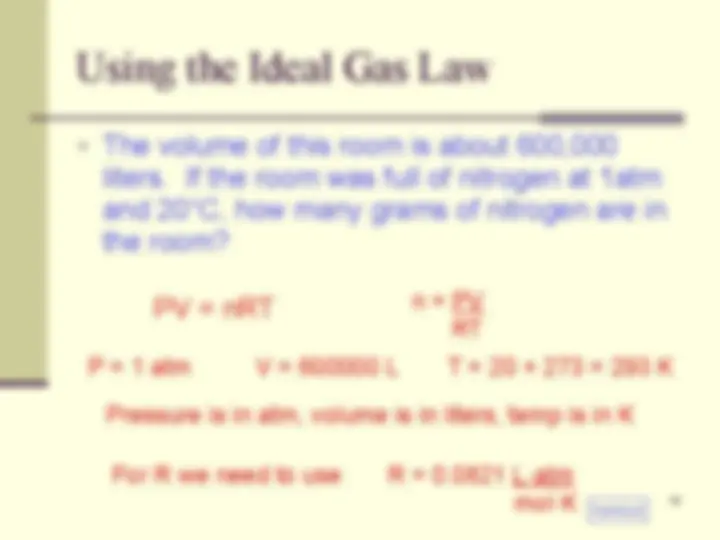
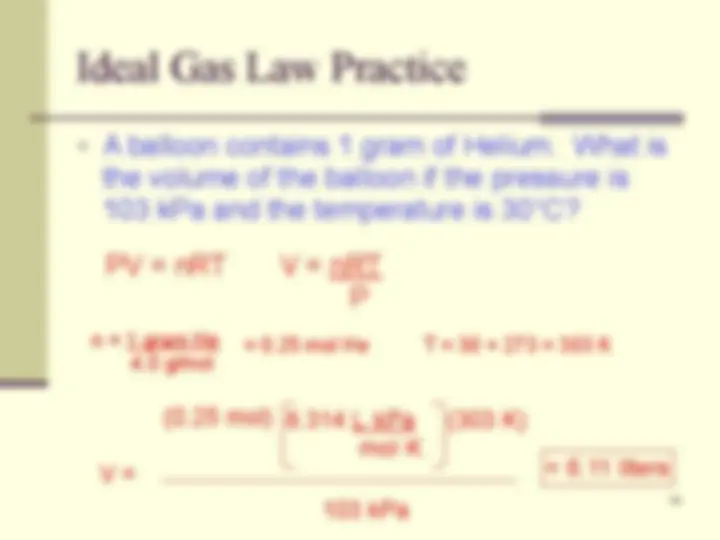
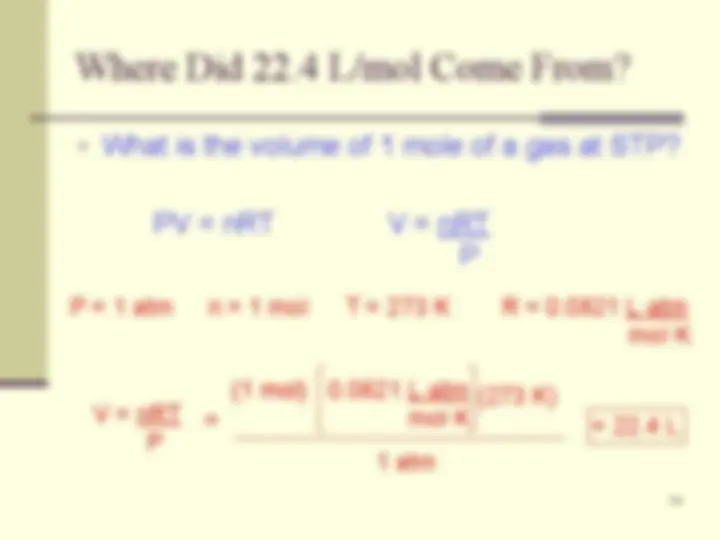


Study with the several resources on Docsity

Earn points by helping other students or get them with a premium plan


Prepare for your exams
Study with the several resources on Docsity

Earn points to download
Earn points by helping other students or get them with a premium plan
Community
Ask the community for help and clear up your study doubts
Discover the best universities in your country according to Docsity users
Free resources
Download our free guides on studying techniques, anxiety management strategies, and thesis advice from Docsity tutors
Ideal Gas Law. PV = nRT. The pressure of a gas times its volume equals the number of moles of the gas times a constant (R) times the temperature of the gas.
Typology: Exams
1 / 14

This page cannot be seen from the preview
Don't miss anything!









1
Gas Pressure in General Dalton’s Law Charles’s Law Boyle’s Law Gay-Lussac’s Law Combined Gas Laws Graham’s Law Ideal Gas Law
2
4
The factor “R” in the ideal gas law equation is known as the “gas constant”. R = PV nT The pressure times the volume of a gas divided by the number of moles and temperature of the gas is always equal to a constant number.
5
nT The numerical value of the constant depends on which units the pressure volume and temperature are in. There are numerous values for R that correspond to different groups of units of measurement.
7
■ When using the ideal gas equation you must choose the value of R that fits the other units you are using. ■ Note that the only difference in these three R values is the unit for pressure. ■ There are many other values of R for other combinations of measurement units. R = 8.314 L·kPa mol·K R = 0.0821 L·atm mol·K R = 62.4 L·mmHg mol·K For English engineering units the value of R is: 10.73 psi·ft 3 lbmol·˚R
8
n = PV RT P = 8 atm V = 10 L T = 20 + 273 = 293 K Pressure is in atm, volume is in liters, temp is in K For R we need to use R = 0.0821 L·atm mol·K
10
n = PV RT P = 1 atm V = 600000 L T = 20 + 273 = 293 K Pressure is in atm, volume is in liters, temp is in K For R we need to use R = 0.0821 L·atm mol·K (^) handout
11
P = 1 atm V = 600000 L T = 293 K R = 0.0821 L·atm mol·K n = PV RT = (1 atm)(600000 L) 0.0821 L·atm mol·K
= 24943 moles 24943 moles N 2 1 mole N 2 28.00 g N 2 = 698404 g nitrogen 1538 lbs. handout
13
n = 1 gram He 4.0 g/mol = 0.25 mol He T = 30 + 273 = 303 K V = (0.25 mol) (^) 8.314 L·kPa mol·K
103 kPa = 6.11 liters
14 Where Did 22.4 L/mol Come From?
P = 1 atm n = 1 mol T = 273 K R = 0.0821 L·atm mol·K V = nRT P
0.0821 L·atm mol·K
(1 mol) 1 atm (1 mol)